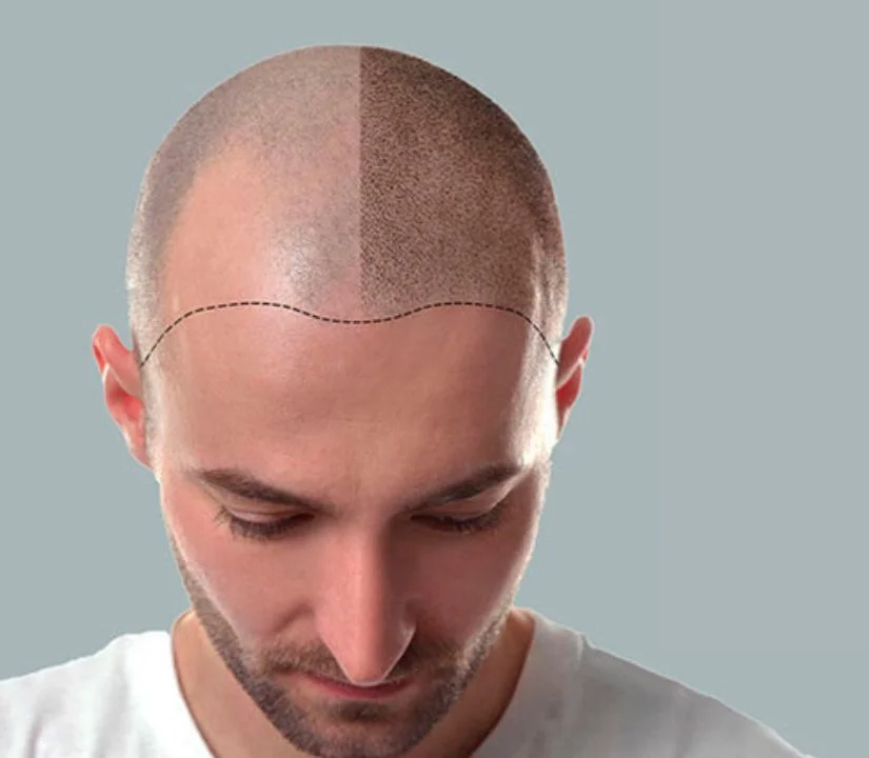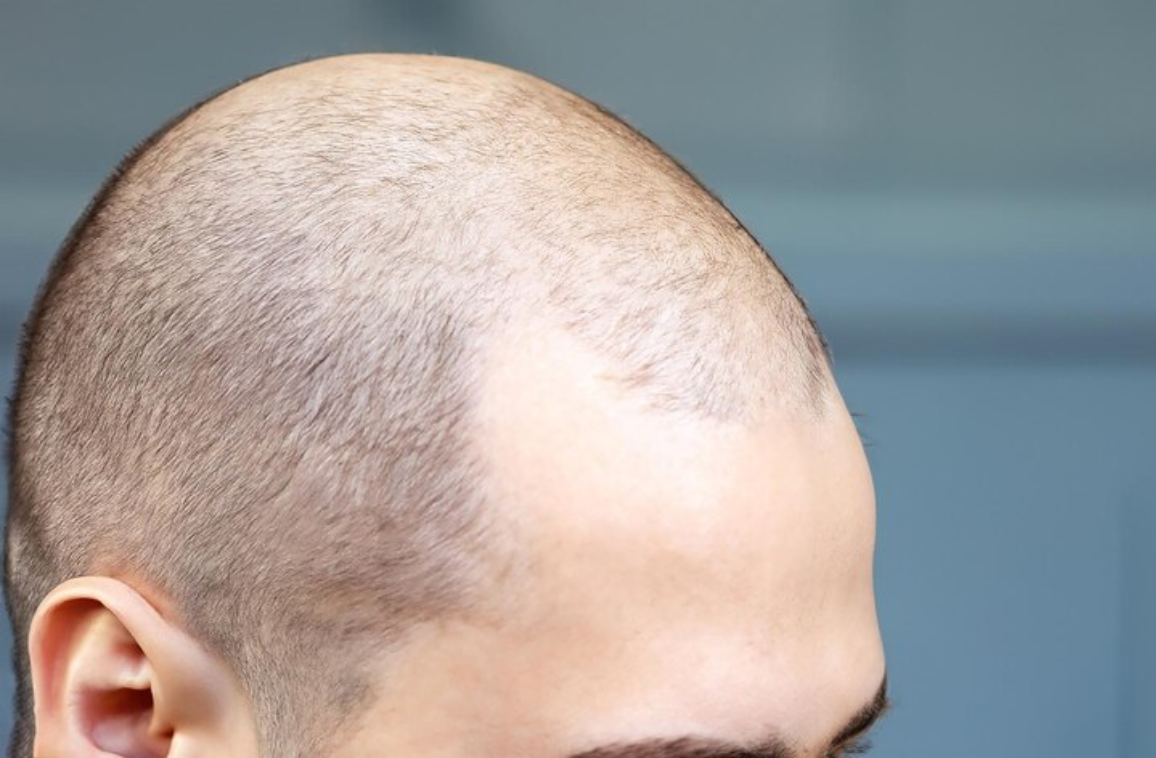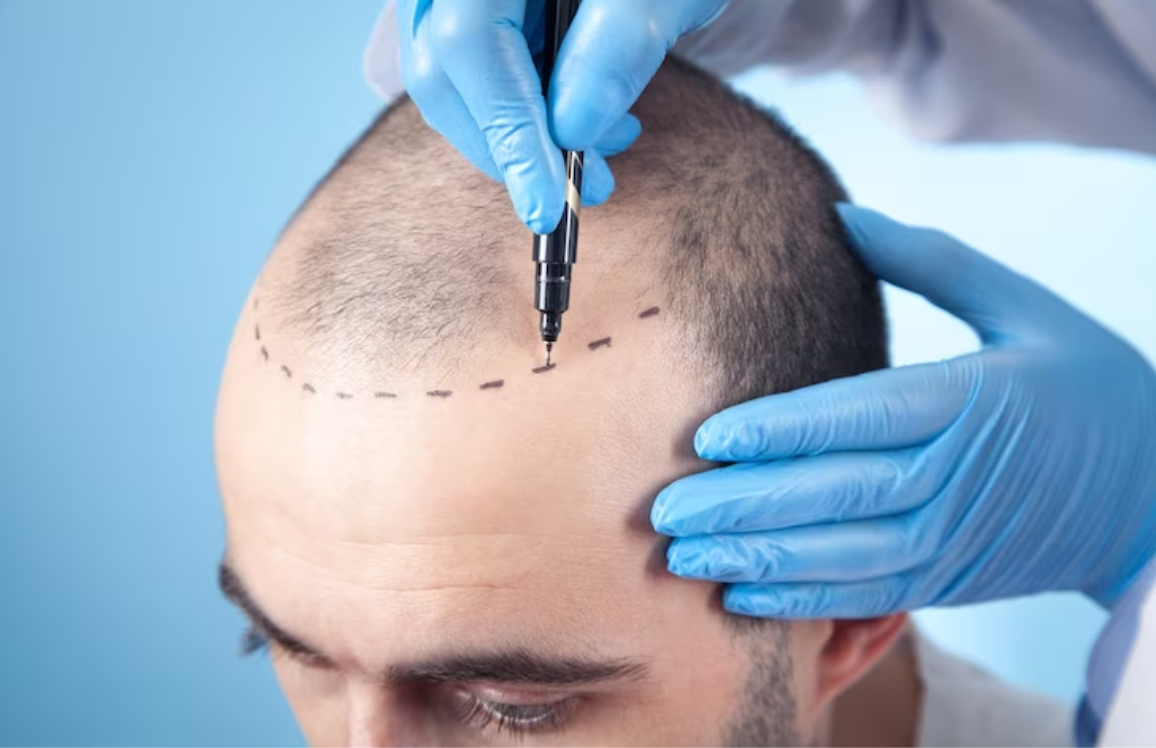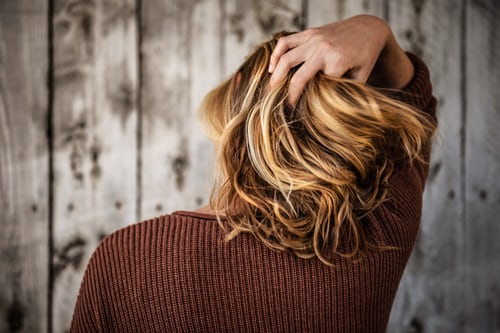Microblading for full brows is there, and similarly, scalp micro pigmentation can create the illusion of fuller hair. Both fall under the category of micro pigmentation and are very different methods of implanting pigment.
While micro-blading is typically carried out with a manual blade, scalp micro-pigmentation is performed using an electric tattoo device. This is because more power is needed to penetrate the skin on one’s scalp, which is thicker than the skin under one’s eyebrows.
How does SMP work, and who benefits?
The goal of SMP is not to create hair-like lines as a person would when microblading eyebrows, but instead to use tiny, layered dots in different hues of black to replicate the look of a shadow on one’s scalp. This style, referred to as pointillism, is done to create natural-looking depth and definition.
A skilled practitioner will indeed work to ensure the dots look like natural hair follicles and also blend in seamlessly with one’s complexion.
This process can be useful for people who experience all forms of hair loss. This does include people with:
- Cancer
- thinning hair
- alopecia
- male and female pattern baldness
Does it hurt? What is the process like?
There can be some discomfort, and how much of it largely depends on one’s pain tolerance.
People with scalp acne or even other skin sensitivities such as psoriasis need to avoid getting SMP during a breakout or even a flare-up, as it will be rather difficult to apply pigment to the inflamed areas. If prone to developing keloids, which are indeed more common in a person with darker skin, he or she can also suffer from SMP.

Once research is done and a responsible and skilled SMP artist is available, there is an initial consultation. During this meeting, the practitioner will prepare the patient for what to expect and how to prepare beforehand.
A few general guidelines:
- Showering before each treatment is required. The affected person will not be able to wash or wet one’s scalp (this includes sweating excessively) for four days after each appointment.
- Each treatment takes between four and five hours.
- How many treatments a person needs depends on the amount of scalp SMP. Even if it is only for a small area such as a widow’s peak, three to four treatments are required for long-term retention since SMP is a process of layering color.
- Treatments will be scheduled a few weeks apart.
In the weeks between treatments, avoid swimming, using steam or sauna rooms, or taking extremely hot showers that may cause a steam storm.
Avoid exposing one’s scalp to the sun for the first four days. Wearing a hat helps. On the fifth day after treatment, the person can expose the treated skin to the sun for one hour, or 45 minutes if they have very fair skin.
Less sun exposure to the treated area means better long-term retention.
After the final treatment:
- Avoid swimming, saunas, and steam rooms for 28 days after one’s final treatment.
- Keep out of the sun for about 28 days after treatment. Thereafter, use SPF 30–50 sunscreen.
- Avoid heavy exercise for about five days after one’s final treatment.
- Begin to regularly moisturize one’s treated area after the fourth day of the final treatment.
Conclusion
SMP can be suitable for people who have:
- Genetic balding.
- Alopecia.
- Male or female-pattern hair loss.
- A scar or birthmark on one’s scalp they want to cover.
- Hair loss occurs from cancer treatments.




